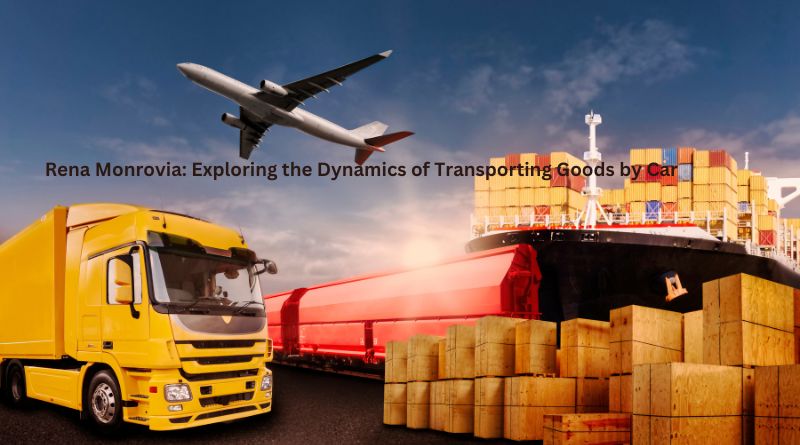In recent years, the concept of Rena Monrovia has gained prominence in discussions surrounding this mode of transportation. Transportation of goods by car has been a cornerstone of modern logistics, facilitating the movement of products across vast distances efficiently and economically.In this article, we delve into the intricacies of Rena Monrovia and its implications for the transport industry.
Understanding Rena Monrovia
Rena Monrovia refers to the process of transporting goods by car using specific routes and strategies to optimize efficiency and minimize costs. It involves meticulous planning, coordination, and execution to ensure the smooth flow of goods from origin to destination. The term encompasses various factors, including route selection, vehicle capacity utilization, and load optimization.
The Role of Technology in Rena Monrovia
Advancements in technology have revolutionized the way goods are transported by car, empowering logistics companies to enhance the efficiency and reliability of Rena Monrovia. GPS tracking, real-time route optimization algorithms, and vehicle telematics systems play pivotal roles in streamlining operations and minimizing transit times. Additionally, the integration of IoT devices enables remote monitoring of cargo conditions, ensuring compliance with safety regulations and quality standards.
Environmental Considerations and Rena Monrovia
While Rena Monrovia offers numerous benefits in terms of efficiency and cost-effectiveness, it is essential to acknowledge its environmental impact. The transportation sector is a significant contributor to greenhouse gas emissions and air pollution, prompting a growing emphasis on sustainability initiatives. By adopting eco-friendly practices such as route optimization, vehicle electrification, and alternative fuel usage, companies can mitigate their carbon footprint and contribute to environmental conservation efforts.
Regulatory Framework and Compliance in Rena Monrovia
The transport of goods by car is subject to a myriad of regulations and standards governing vehicle safety, driver qualifications, and cargo handling practices. Compliance with these regulations is paramount to ensure the legality and integrity of Rena Monrovia operations. Failure to adhere to regulatory requirements can result in fines, penalties, and reputational damage for logistics providers. Therefore, industry stakeholders must stay abreast of regulatory updates and implement robust compliance mechanisms to uphold ethical and legal standards.
Challenges and Opportunities in Rena Monrovia
Despite its benefits, Rena Monrovia is not without its challenges. Congestion, infrastructure limitations, and unpredictable weather conditions can disrupt supply chains and impede the timely delivery of goods. Moreover, fluctuating fuel prices and geopolitical tensions pose additional risks to the viability of car-based transportation. However, these challenges also present opportunities for innovation and optimization. By leveraging data analytics, predictive modeling, and collaborative partnerships, companies can overcome obstacles and enhance the efficiency of Rena Monrovia operations.
Conclusion
In conclusion, Rena Monrovia represents a multifaceted approach to transporting goods by car, encompassing strategic planning, technological innovation, and regulatory compliance. As the global economy continues to evolve, the role of Rena Monrovia in facilitating seamless logistics operations becomes increasingly significant. By embracing sustainability, leveraging technology, and addressing regulatory challenges, stakeholders can unlock the full potential of Rena Monrovia and drive positive outcomes for businesses and society alike.
Read also: check

